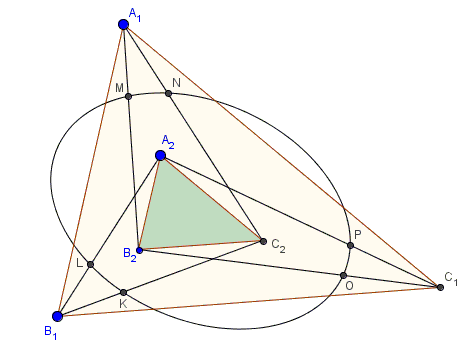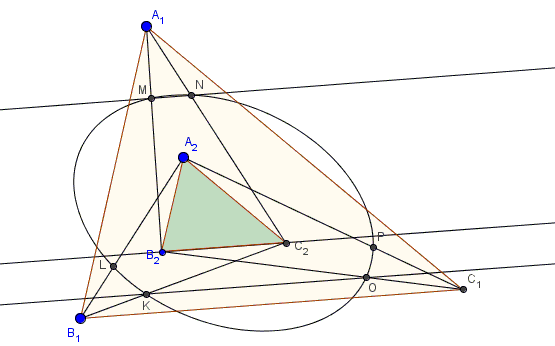Two Similar Triangles with Parallel Sides
What is this about?
Problem
Let there be two similar triangles $\Delta A_{1}B_{1}C_{1}$ and $\Delta A_{2}B_{2}C_{2}$ with the corresponding sides parallel: $A_{1}B_{1}\parallel A_{2}B_{2},$ etc. Let $r$ be a real number. Define six points $rA_{1}+(1-r)B_{2},$ $rA_{1}+(1-r)C_{2},$ $rB_{1}+(1-r)A_{2},$ $rB_{1}+(1-r)C_{2},$ $rC_{1}+(1-r)A_{2},$ and $rC_{1}+(1-r)B_{2}.$

Prove that the six points lie on a conic.
Hint
Pay attention to what kind of hexagon is formed by the six points.
Solution
The opposite sides of the hexagon so obtained are parallel:

Thus, we are in a position to apply the statement about a hexagon formed by three pairs of parallel lines: the six points are conconical. However, unlike in the general case, in the current problem the conic is always bounded, making it an ellipse.
Acknowledgment
Dao Thanh Oai has posted the problem with $r=.5$ at the CutTheKnotMath facebook page, pointing out the difference with the general case.
![]()
|Contact| |Front page| |Contents| |Geometry|
Copyright © 1996-2018 Alexander Bogomolny73509505
